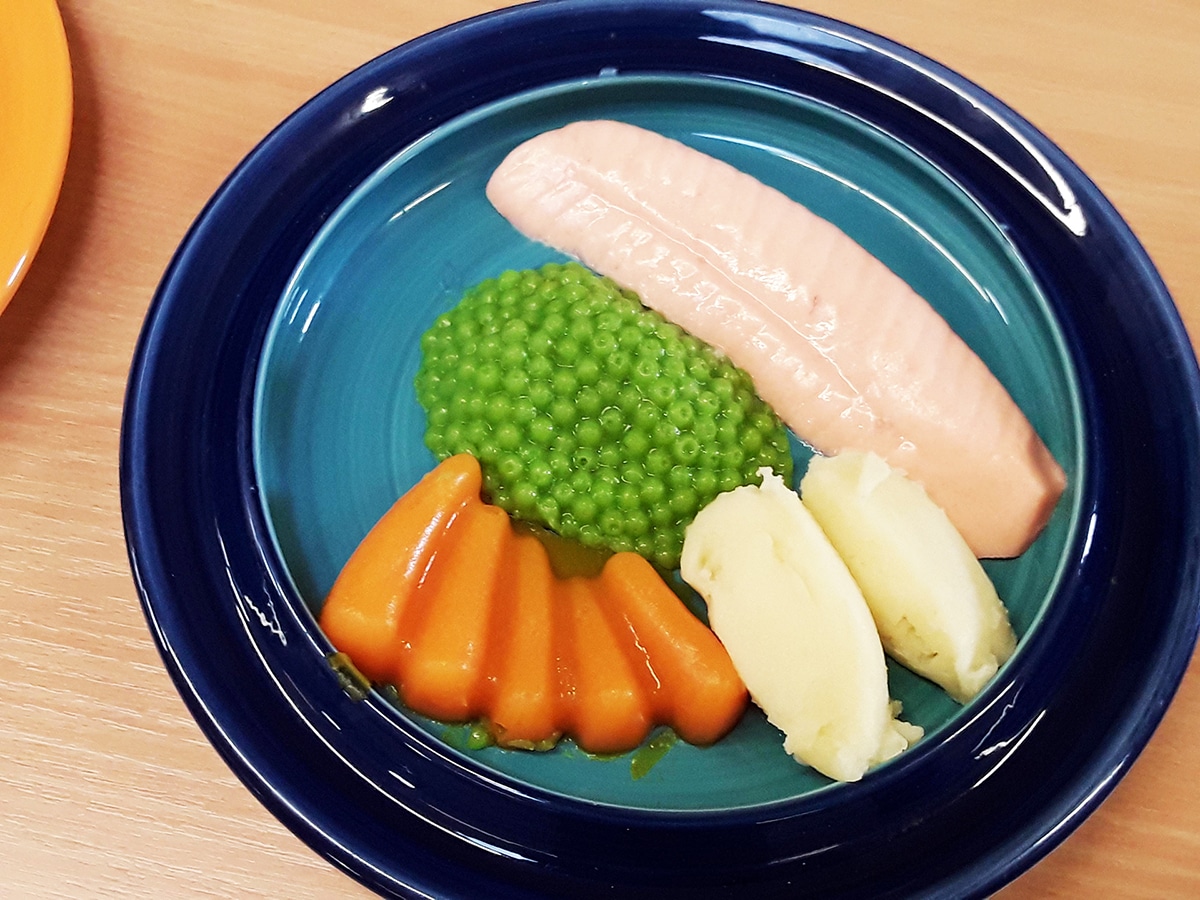In care homes, food quality and presentation directly impact residents’ wellbeing. This is especially true for those on a pureed diet due to swallowing difficulties (dysphagia). Meals that look appetising encourage residents to eat more, leading to better nutrition, improved health, and less food waste. Pureed food moulds for care homes are a simple yet powerful solution. By reshaping pureed food into realistic forms, moulds transform bland, shapeless meals into dishes that look familiar and appealing.
The Challenge of Dysphagia in Care Homes
Dysphagia affects up to 70% of residents in care homes, and nearly half of them are thought to be malnourished. Unfortunately, many are served pureed meals that lack texture, colour, and presentation. This makes eating feel like a chore rather than an enjoyable part of the day.
For care homes, this is more than a nutrition issue—it’s also about dignity. Pureed food moulds help overcome this challenge by restoring the visual appeal of mealtimes. Another way to offset this common problem is by using Dysphagia cups to help those with swallowing issues drink easier.
How Pureed Food Moulds for Care Homes Improve Mealtimes
At Able, we provide care homes with a complete pureed food mould solution, designed to make meals more appetising and dignified. Our moulds and food thickeners are created specifically for reshaping pureed foods like meat, vegetables, and fruit into realistic, recognisable forms.
Myles Cook, Managing Director, explains:
“Our wide range of pureed food moulds, paired with our thickener products, transforms texture-modified meals into dishes that residents actually want to eat. This improves nutrition, wellbeing, and restores dignity.”
Simply put, pureed food moulds for care homes make meals look better—and when food looks better, residents eat better.
What Makes a Good Pureed Meal in Care Homes?
To get the most from pureed food moulds, it’s important to follow some key principles:
-
Meals should look and taste as close as possible to standard-texture diets.
-
Serve each food type separately, not blended together.
-
Use a blender or processor for smooth, lump-free textures.
-
Ensure each meal meets nutritional requirements.
-
Offer smaller, fortified meals more often to boost calorie intake.
These steps help care homes deliver pureed meals that are both nutritious and dignified.
Understanding Pureed Food Texture for Care Homes
Texture is critical when preparing food for residents with dysphagia. When using pureed food moulds, make sure the food meets these standards:
-
Smoothness: The puree must be lump-free.
-
Moisture: Food shouldn’t separate into solids and liquids.
-
Stickiness: The puree should hold its shape but still slide off a spoon.
-
Softness: No chewing should be required, making it safe for swallowing.
Step-by-Step: How to Use Pureed Food Moulds in Care Homes
Step 1: Puree the Food
Blend cooked food until smooth and lump-free.
Step 2: Add Thickener
Mix in a small amount of food thickener so the puree holds shape.
Step 3: Fill the Moulds
Spread puree evenly into moulds, cover, and freeze for at least four hours.
Step 4: Plate the Food
Remove from moulds, arrange neatly on the plate, and thaw before reheating.
Step 5: Heat and Serve
Reheat to 75°C, cover to retain moisture, and serve. Residents will enjoy meals that look and taste familiar.
Why Care Homes Should Invest in Pureed Food Moulds
The benefits of pureed food moulds for care homes go beyond presentation:
-
Nutrition: Residents eat more, reducing malnutrition risk.
-
Dignity: Meals look like “real food,” restoring pride and enjoyment.
-
Efficiency: Moulded portions are easier to prepare, store, and serve.
-
Compliance: Helps meet care standards for resident wellbeing.
Ready to Transform Mealtimes with Pureed Food Moulds?
At Able, we specialise in supporting care homes with fit-for-purpose solutions. Our pureed food moulds and thickeners are designed to improve mealtimes, restore dignity, and reduce food waste.
👉 Contact us today for advice on the best pureed food moulds for care homes or book a free consultation.
Pureed Food FAQ’s
How common is dysphagia among care home residents?
Dysphagia affects the majority of care home residents and can lead to malnutrition if meals aren’t properly adapted.
What are pureed food moulds and how do they help?
Food moulds reshape pureed meals into recognisable forms, making them more appealing and dignified for residents.
What makes a good pureed meal?
A well-prepared pureed meal should taste familiar, look appetising, and meet nutritional needs — not just be blended food.
Why is texture so important in pureed diets?
Texture affects both safety and dignity. The right consistency reduces choking risks and makes mealtimes more enjoyable.
How do you use pureed food moulds in care homes?
It’s a simple process of blending, thickening, moulding, and reheating — but technique makes all the difference.






